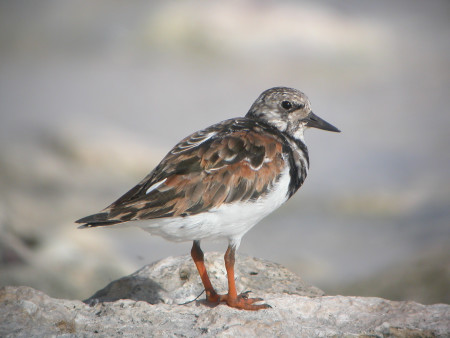
How to spot it: This stocky shorebird is identified, in its breeding plumage, by its reddish-brown
back, black bib, orange legs and small pointed bill. A striking white-and-dark pattern on its wings, back and tail is visible in flight. The colors on adults in winter plumage and young birds are duller, but the same pattern is retained. Turnstones have a variety of calls, including a loud, nasal cuck-cuck-cuck, increasing in volume.
Where to find it:
Ruddy Turnstone can be found on our beaches, mudflats, pond edges, and both sandy and rocky coasts. It is one of 40 to 50 shorebird species recorded in the Caribbean. It is an amazing long-distance migrant, since it breeds in the Arctic tundra and winters as far south as Argentina. In the West Indies, it is observed mainly from August to May, on our beaches and lagoons. Yearlings stay in our islands in June and July because they reproduce only in their second year.
What does it eat?
Turnstones are named for their method of feeding, in which they walk along the beach, deftly overturning small stones and pebbles and seizing the invertebrate food items hiding underneath. They also dig holes in the sand, often larger than themselves, in pursuit of burrowing crustaceans.
Global status:
Ruddy Turnstone has a global distribution and its populations are stable, but, as with many other shorebirds, it is threatened by the destruction of coastal habitats from development and pollution.
